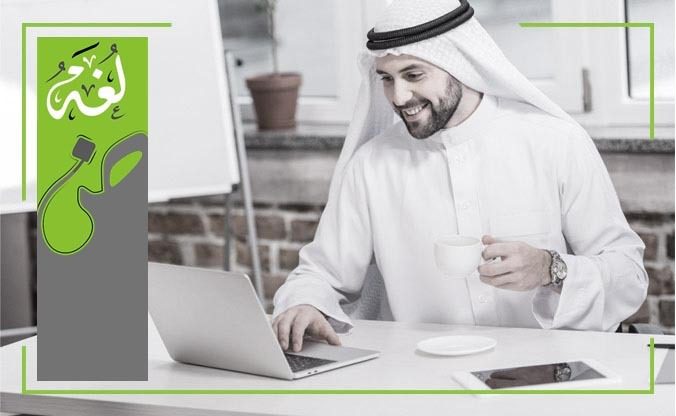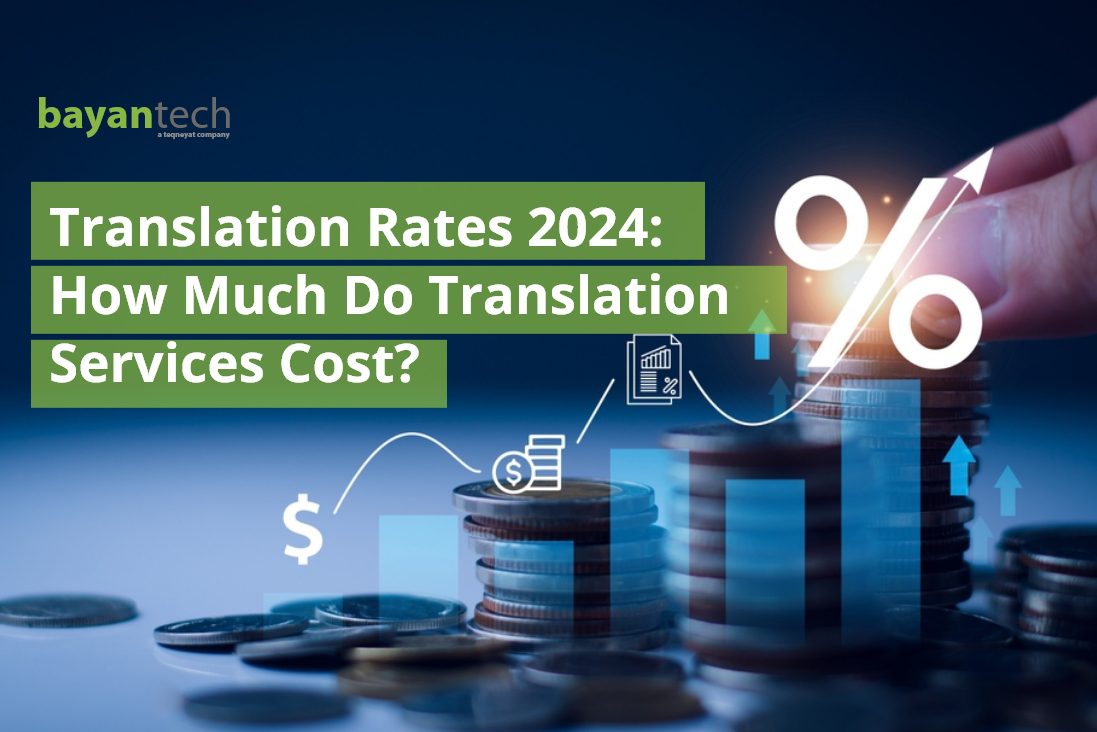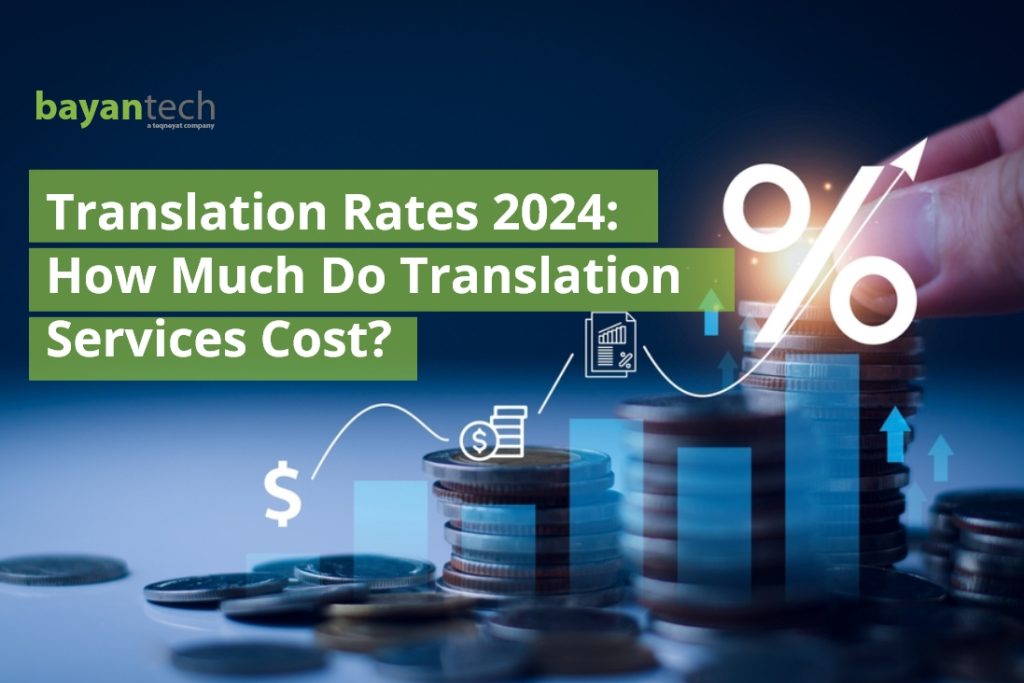Arabic is a hard-to-learn and a hard-to-translate language. Yet, the need to understand this language increases every day, despite the complexity of Arabic translation. The world of entrepreneurs keeps an eye on Arab speaking countries for many reasons, mostly economic ones. Countries in the Arabian Peninsula and North Africa are full of business opportunities as they are rich in minerals, oil, and natural gas. Besides, it is much cost-effective to establish manufacturing factories and remote businesses like telecommunication companies in Arabic speaking countries.
It is important for business owners to closely follow what is happening in the Arab countries and how it can impact their investments.Therefore, the need for Arabic translation ,from and into Arabic, is arising. However, literal ِtranslation is not enough when it comes to Arabic.
Arabic Language Facts
Arabic is a “Semitic” language spoken by 420 million people around the world, according to World Atlas. The 1,500-year-old Arabic language is the official one in 22 countries located in the Middle East and North Africa. Each of these countries speaks modern standard Arabic and have their dialects. Moreover, Arabic is among the six most used languages in the United Nations (UN), according to the British Council.
ِArabic has around 12.3 million words. Words in Arabic construct from roots of 3 letters, from these roots, the words are derived to form verb, subject, and object, as well as other lexical groups. For Arabic synonyms, the translator should get to the roots of the words. Thus, he/she will have a better understanding of the degrees and slight differences between the synonyms. Then, he/she will be able to decide on the better for the context and meaning.
In the Arab world, people use different names for family members. There is a word for paternal uncle ‘amm’ and another word for maternal uncle ‘khal.’ Additionally, the word for maternal aunt is ‘khala,’ while the one for paternal aunt is ‘ammah.’
Moreover, Arabic has letters that do not exist in English, like “ض, ع, ق, خ” which makes it hard to write Arabic names in English letters. However, in Arabic translation, a translator can combine several English letters to represent such Arabic unique letters, like using “kh” instead of “خ” but it will not give the same sound as in Arabic.

Arabic Translation Challenges
Arabic is a poetic language, in which people tend to use many figures of speech, such as similes and metaphors. A Sentence may have several adjectives that give the same meaning to intensify this meaning. In Arabic translation, your translator will keep in mind that the English language is precise. Therefore, literally translating the Arabic sentence into English will look redundant.
The Arabic language tends to have long sentences. During the Arabic translation process, a question may arise whether to divide these sentences or not, especially when they seem undividable. Long sentences in the English language are hard-to-follow, making the Arabic longer sentences a challenge for the translator. This could also be a challenge in English-to-Arabic translation as the longer sentences might cause a problem in the layout, especially in case of software and website localization. Additionally, the sentence structure in Arabic has many possible arrangements, especially in literature, as the subjects or verbs can sometimes be delayed or omitted.
The linguistic nature of Arabic is diglossia, which means that the written words differ from spoken Arabic. Although all Arabs widely understand standard Arabic, sometimes the source file in the Arabic translation project can have sentences in specific colloquial Arabic dialects, needing a translator who is expert in these dialects. Moreover, localizing your content for certain countries in the Arab world means addressing the people in their friendly dialects.
Another challenge comes from the fact that Arabs add pronouns to the word as a prefix or a suffix, and sometimes they omit the whole pronoun. For example, if someone asked, “where is the cake?” The answer can be “akaltohaأكلتها” one word in Arabic that means a complete sentence in English, meaning “I ate it.”

Arabic Language Lexical Ambiguity
The Arabic language can be lexically ambiguous, especially in words that use diacritics, such as fatha( َ ), dammah ( ُ ), and kasra( ِ ), instead of short vowels. In these words, it might be difficult for a translator, who is not an expert in Arabic, to understand the exact meaning and convey it in English. The word “علم” can be pronounced “alam عَلَم” which means flag, “elm عِلم” which means science, or “allam علّم” which could mean marked or taught according to the context. Moreover, there are many words that refer to the same thing, with different functions or degrees. For example, Arabic has around 100 words for “camel”, including “naqa ناقة” for the female camel and “ba’eer بعير” which means a camel that is capable of carrying goods.
In the case of translating classical Arabic texts, it is crucial to be aware of the culture in Arabic translation. Some Arabic words have different meanings in the past compared to their current usage. For example, in classical Arabic and in Quraan, the term “Al Haiawan الحيوان” used to mean good immortal life. Today, the only purpose it is used is to say “the animal”.
Arabic is also ambiguous when it comes to singular and plural words. Sometimes the plural form of a particular word does not have anything to do with the singular ones. Take the word “imra’a امرأة” for example; it is a singular word meaning woman; the plural form is “nisa’a نساء,” meaning women.
Translating Arabic Figurative Speech
Arabic translation can be semantically challenging. When a linguist is translating from Arabic, he/she needs to know about Arabic collocations. In Arabic, one word can have different meanings according to the terms it is collocated with. For instance, the terms “saheb el dar صاحب الدار” means the house owner, while “saheb el galala صاحب الجلالة” means his majesty, and “saheb el ma’aly صاحب المعالي” means the minister. Like collocation, Arabic idioms and proverbs need deep cultural awareness to be translated into English or any other language.
Another challenge is the poetic nature of Arabic, and its literature, which is highly sought from around the world. Not just classical poems, but contemporary novels are also translated into many languages. Arab writers and poets like to challenge each other’s language mastery. They use polysemy to have a poetic sense, for example, the Ibn Sharaf al-Qairawany’s poetry verse saying “فدارهم ما دمت في دارهم – وأَرْضِهم ما دمت في أرضهم.” Al-Qairawany uses the word “darehm دارهم” to convey two different meanings. The first time the word mentioned means to cope with them, and the second time means their house. This part of the verse means you shall cope with people while you are at their home. The poet also used polysemy in the second part of the verse, in the word “ardehem أَرْضِهم.” This word means to satisfy them or their land, as the verse continues saying you shall satisfy them while you are in their property.
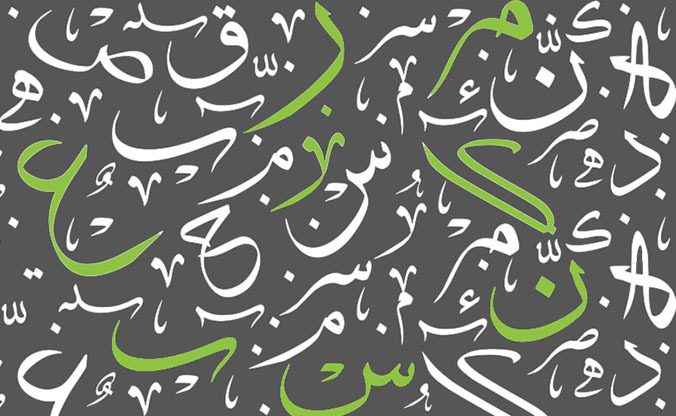
Unique Untranslatable
The Arabic language has many unique words that cannot be literally translated into one word and don’t have an equivalent. The word “tarab طرب,” which means a certain level of joy reached while enjoying music, is sometimes translated as “tarab” to convey its special meaning in Arabic. Additionally, the words “ishq عشق,” “mawada مودة,” and “shaghaf شغف” mean the deepest kind of love a person cannot express in a single word in English. Another term that doesn’t have an equivalent in English is the word “jinn جن.” According to Arabic beliefs, a jinn or a genie is a supernatural creature that lives in a parallel world and can harm human beings if used by a sorcerer.
Translating Islamic content is also challenging. Understanding Arabic and Islamic culture are vital in Islamic translation. Islamic context, like the Quran and Hadiths, is full of words that have no equivalent in other languages. For example, the word ‘zakat زكاة’ and the word ‘sadaqa صدقة’ cannot be simply translated into donations or charity. Both words might have a similar meaning for non-experts. However, they differ significantly in terms of amount and obligation.
Islamic texts are eloquent and stylistic, yet they have ambiguous words that convey more than one meaning. Besides, the use of verbs and the sentence structure in Islamic content can sometimes be unconventional.
Literal Translation Might be Awkward
When you have a project that needs translating from Arabic, it is vital to hire a translator who is well aware of the Arabic language, its usage and its culture. Arabic has many words that can be awkward if they are literally translated. Translating “saratan el bahr سرطان البحر” literally will result in “Sea cancer” which will look awkward for a native English speaker. However, the correct translation of these words is “lobster.”
The Arabic language also has expressions that will have strange meanings if translated literally. The words “بنات الافكار,” which are used both formally and informally, would literally mean “the daughters of thoughts.” Instead, the translator should explain the meaning saying that they are the original thoughts of a specific person. The translator could also use a similar expression from the English language, like the informal “brainchild.”
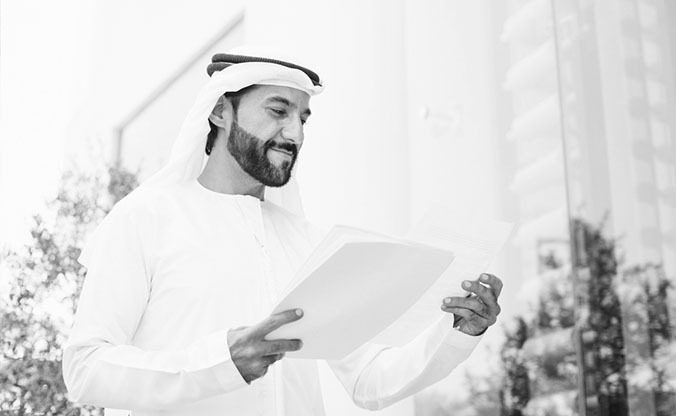
Research and Localization are the Solution
In order to translate from Arabic into any other language, you don’t only need a translator who masters the target language. For Arabic language translation, you need a translator who has a native knowledge of the source language and its culture.
It is not only translation, but localization is highly needed to convey Arabic content into other languages or to deliver any message to the Arab world. Arabic localization takes a lot of research to absorb the richness of linguistic features and culture. An expert in the Arabic language will know the meaning behind any metaphor or polysemy. This expert also needs to have a great experience in the target language to deliver the meaning behind the Arabic texts creatively.
Arabic is a right-to-left- (RTL) language. Therefore, in order to localize Arabic content into left-to-right (LTR) languages like English or vice versa, your Arabic translation provider should have a desktop publishing (DTP) department to adjust the layout.
Arabic translation is quite challenging due to the poetic nature, linguistic features, and the culture of the Arab world. However, with the right localization services provider, your content will be professionally delivered to your target audience.
bayantech Arabic Translation Expertise
At bayantech, we have the expertise to provide you with the best Arabic translation services. Because we care about quality, we do not only choose linguists who are native in the target language, but we also ensure that our linguists have near-native experience in the source language, especially when it comes to translating from Arabic. We also offer proofreading services and back translation services to ensure your Arabic message is well delivered. bayantech has vast experience in Arabic translation. We completed many Arabic projects, including Islamic translation projects, in which we have a tremendous experience.
bayantech was founded in the middle of the Arab world in 2004. We have worked our way to success in extending our branches in UAE, KSA, Egypt, and South Africa. bayantech has acquired ISO 9001:2015 and 17100:2015 certification standards, guaranteeing top-quality services and projects. We have been providing effective language solutions in over 260 languages, including Arabic. bayantech has over 4000 certified linguists who translated more than 600 million words since the establishment.
Order bayantech’s translation and localization services now to deliver your Arabic projects across borders.
Arabic is a hard-to-learn and a hard-to-translate language. Yet, the need to understand this language increases every day, despite the complexity of Arabic translation. The world of entrepreneurs keeps an eye on Arab speaking countries for many reasons, mostly economic ones. Countries in the Arabian Peninsula and North Africa are full of business opportunities as they are rich in minerals, oil, and natural gas. Besides, it is much cost-effective to establish manufacturing factories and remote businesses like telecommunication companies in Arabic speaking countries.
It is important for business owners to closely follow what is happening in the Arab countries and how it can impact their investments.Therefore, the need for Arabic translation ,from and into Arabic, is arising. However, literal ِtranslation is not enough when it comes to Arabic.
Arabic Language Facts
Arabic is a “Semitic” language spoken by 420 million people around the world, according to World Atlas. The 1,500-year-old Arabic language is the official one in 22 countries located in the Middle East and North Africa. Each of these countries speaks modern standard Arabic and have their dialects. Moreover, Arabic is among the six most used languages in the United Nations (UN), according to the British Council.
ِArabic has around 12.3 million words. Words in Arabic construct from roots of 3 letters, from these roots, the words are derived to form verb, subject, and object, as well as other lexical groups. For Arabic synonyms, the translator should get to the roots of the words. Thus, he/she will have a better understanding of the degrees and slight differences between the synonyms. Then, he/she will be able to decide on the better for the context and meaning.
In the Arab world, people use different names for family members. There is a word for paternal uncle ‘amm’ and another word for maternal uncle ‘khal.’ Additionally, the word for maternal aunt is ‘khala,’ while the one for paternal aunt is ‘ammah.’
Moreover, Arabic has letters that do not exist in English, like “ض, ع, ق, خ” which makes it hard to write Arabic names in English letters. However, in Arabic translation, a translator can combine several English letters to represent such Arabic unique letters, like using “kh” instead of “خ” but it will not give the same sound as in Arabic.

Arabic Translation Challenges
Arabic is a poetic language, in which people tend to use many figures of speech, such as similes and metaphors. A Sentence may have several adjectives that give the same meaning to intensify this meaning. In Arabic translation, your translator will keep in mind that the English language is precise. Therefore, literally translating the Arabic sentence into English will look redundant.
The Arabic language tends to have long sentences. During the Arabic translation process, a question may arise whether to divide these sentences or not, especially when they seem undividable. Long sentences in the English language are hard-to-follow, making the Arabic longer sentences a challenge for the translator. This could also be a challenge in English-to-Arabic translation as the longer sentences might cause a problem in the layout, especially in case of software and website localization. Additionally, the sentence structure in Arabic has many possible arrangements, especially in literature, as the subjects or verbs can sometimes be delayed or omitted.
The linguistic nature of Arabic is diglossia, which means that the written words differ from spoken Arabic. Although all Arabs widely understand standard Arabic, sometimes the source file in the Arabic translation project can have sentences in specific colloquial Arabic dialects, needing a translator who is expert in these dialects. Moreover, localizing your content for certain countries in the Arab world means addressing the people in their friendly dialects.
Another challenge comes from the fact that Arabs add pronouns to the word as a prefix or a suffix, and sometimes they omit the whole pronoun. For example, if someone asked, “where is the cake?” The answer can be “akaltohaأكلتها” one word in Arabic that means a complete sentence in English, meaning “I ate it.”

Arabic Language Lexical Ambiguity
The Arabic language can be lexically ambiguous, especially in words that use diacritics, such as fatha( َ ), dammah ( ُ ), and kasra( ِ ), instead of short vowels. In these words, it might be difficult for a translator, who is not an expert in Arabic, to understand the exact meaning and convey it in English. The word “علم” can be pronounced “alam عَلَم” which means flag, “elm عِلم” which means science, or “allam علّم” which could mean marked or taught according to the context.
Moreover, there are many words that refer to the same thing, with different functions or degrees. For example, Arabic has around 100 words for “camel”, including “naqa ناقة” for the female camel and “ba’eer بعير” which means a camel that is capable of carrying goods.
In the case of translating classical Arabic texts, it is crucial to be aware of the culture in Arabic translation. Some Arabic words have different meanings in the past compared to their current usage. For example, in classical Arabic and in Quraan, the term “Al Haiawan الحيوان” used to mean good immortal life. Today, the only purpose it is used is to say “the animal”.
Arabic is also ambiguous when it comes to singular and plural words. Sometimes the plural form of a particular word does not have anything to do with the singular ones. Take the word “imra’a امرأة” for example; it is a singular word meaning woman; the plural form is “nisa’a نساء,” meaning women.
Translating Arabic Figurative Speech
Arabic translation can be semantically challenging. When a linguist is translating from Arabic, he/she needs to know about Arabic collocations. In Arabic, one word can have different meanings according to the terms it is collocated with. For instance, the terms “saheb el dar صاحب الدار” means the house owner, while “saheb el galala صاحب الجلالة” means his majesty, and “saheb el ma’aly صاحب المعالي” means the minister. Like collocation, Arabic idioms and proverbs need deep cultural awareness to be translated into English or any other language.
Another challenge is the poetic nature of Arabic, and its literature, which is highly sought from around the world. Not just classical poems, but contemporary novels are also translated into many languages. Arab writers and poets like to challenge each other’s language mastery. They use polysemy to have a poetic sense, for example, the Ibn Sharaf al-Qairawany’s poetry verse saying “فدارهم ما دمت في دارهم – وأَرْضِهم ما دمت في أرضهم.” Al-Qairawany uses the word “darehm دارهم” to convey two different meanings. The first time the word mentioned means to cope with them, and the second time means their house. This part of the verse means you shall cope with people while you are at their home. The poet also used polysemy in the second part of the verse, in the word “ardehem أَرْضِهم.” This word means to satisfy them or their land, as the verse continues saying you shall satisfy them while you are in their property.

Unique Untranslatable
The Arabic language has many unique words that cannot be literally translated into one word and don’t have an equivalent. The word “tarab طرب,” which means a certain level of joy reached while enjoying music, is sometimes translated as “tarab” to convey its special meaning in Arabic. Additionally, the words “ishq عشق,” “mawada مودة,” and “shaghaf شغف” mean the deepest kind of love a person cannot express in a single word in English. Another term that doesn’t have an equivalent in English is the word “jinn جن.” According to Arabic beliefs, a jinn or a genie is a supernatural creature that lives in a parallel world and can harm human beings if used by a sorcerer.
Translating Islamic content is also challenging. Understanding Arabic and Islamic culture are vital in Islamic translation. Islamic context, like the Quran and Hadiths, is full of words that have no equivalent in other languages. For example, the word ‘zakat زكاة’ and the word ‘sadaqa صدقة’ cannot be simply translated into donations or charity. Both words might have a similar meaning for non-experts. However, they differ significantly in terms of amount and obligation.
Islamic texts are eloquent and stylistic, yet they have ambiguous words that convey more than one meaning. Besides, the use of verbs and the sentence structure in Islamic content can sometimes be unconventional.
Literal Translation Might be Awkward
When you have a project that needs translating from Arabic, it is vital to hire a translator who is well aware of the Arabic language, its usage and its culture. Arabic has many words that can be awkward if they are literally translated. Translating “saratan el bahr سرطان البحر” literally will result in “Sea cancer” which will look awkward for a native English speaker. However, the correct translation of these words is “lobster.”
The Arabic language also has expressions that will have strange meanings if translated literally. The words “بنات الافكار,” which are used both formally and informally, would literally mean “the daughters of thoughts.” Instead, the translator should explain the meaning saying that they are the original thoughts of a specific person. The translator could also use a similar expression from the English language, like the informal “brainchild.”

Research and Localization are the Solution
In order to translate from Arabic into any other language, you don’t only need a translator who masters the target language. For Arabic language translation, you need a translator who has a native knowledge of the source language and its culture.
It is not only translation, but localization is highly needed to convey Arabic content into other languages or to deliver any message to the Arab world. Arabic localization takes a lot of research to absorb the richness of linguistic features and culture. An expert in the Arabic language will know the meaning behind any metaphor or polysemy. This expert also needs to have a great experience in the target language to deliver the meaning behind the Arabic texts creatively.
Arabic is a right-to-left- (RTL) language. Therefore, in order to localize Arabic content into left-to-right (LTR) languages like English or vice versa, your Arabic translation provider should have a desktop publishing (DTP) department to adjust the layout.
Arabic translation is quite challenging due to the poetic nature, linguistic features, and the culture of the Arab world. However, with the right localization services provider, your content will be professionally delivered to your target audience.
bayantech Arabic Translation Expertise
At bayantech, we have the expertise to provide you with the best Arabic translation services. Because we care about quality, we do not only choose linguists who are native in the target language, but we also ensure that our linguists have near-native experience in the source language, especially when it comes to translating from Arabic. We also offer proofreading services and back translation services to ensure your Arabic message is well delivered. bayantech has vast experience in Arabic translation. We completed many Arabic projects, including Islamic translation projects, in which we have a tremendous experience.
bayantech was founded in the middle of the Arab world in 2004. We have worked our way to success in extending our branches in UAE, KSA, Egypt, and South Africa. bayantech has acquired ISO 9001:2015 and 17100:2015 certification standards, guaranteeing top-quality services and projects. We have been providing effective language solutions in over 260 languages, including Arabic. bayantech has over 4000 certified linguists who translated more than 600 million words since the establishment.
Order bayantech’s translation and localization services now to deliver your Arabic projects across borders.
Click on a star to rate this post!
0 / 5. 0

